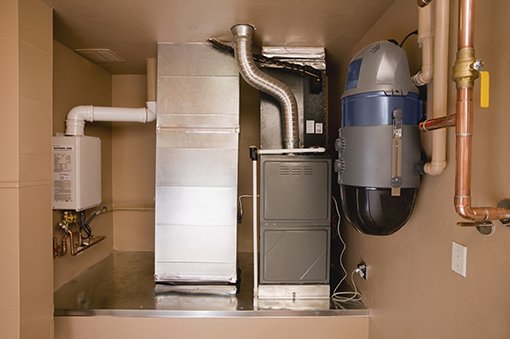A proactive approach to furnace maintenance can save you from a complete system failure. Reduced efficiency and increased fuel consumption signal it’s time to consider the cost of replacement and start looking for a qualified contractor.
Proper furnace replacement is crucial for maintaining resident safety and comfort, necessitating the involvement of licensed companies that provide product and service guarantees.
Furnace lifespan and maintenance
Furnaces typically serve for 20-30 years, but after 10-15 years, they often require servicing. Regular maintenance—such as timely filter changes, burner cleaning, and pre-season check-ups—can extend a furnace’s life. However, frequent and complex repairs indicate it’s time for a replacement before a total breakdown occurs.
Advantages of upgrading to a modern furnace
Modern furnaces not only heat homes more efficiently but also offer several additional benefits:
- Energy Efficiency: Reduced fuel consumption leads to lower gas or electricity bills.
- Cleaner Air: Modern units do not pollute the air, ensuring it remains fresh and warm.
- Environmental Impact: These units contribute less to environmental pollution.
Recognizing the signs for furnace replacement
To avoid emergencies and extra expenses, keep an eye on these warning signs:
- Frequent breakdowns and rising maintenance costs.
- Noisy operation.
- Accumulation of dust, soot, or rust.
- Inconsistent switching on and off.
- Cracks in the heat exchanger.
- Increased heating bills despite normal usage.
- Unstable heat distribution.
- Visible cracks, rust, and corrosion.
- Higher indoor humidity levels.
Multiple signs occurring simultaneously suggest an imminent need for replacement, particularly as warranties near expiration.
Handling a dysfunctional furnace
When a furnace fails, it’s imperative to seek a qualified contractor for swift and professional replacement. For reliable furnace replacement services, contact bhcair.com/aurora-co/furnace-replacement/ . They will replace the faulty unit and ensure proper maintenance, guaranteeing long-term warmth for your home.
Exploring different types of furnaces
Furnaces vary based on their fuel sources, each with specific advantages and drawbacks:
- Natural Gas Furnace: Efficient and effective even in low temperatures, though installation requires extensive air channels.
- Oil-Fueled Furnace: Less popular due to rising oil prices but still in use in the northeastern U.S., producing fewer emissions than gas furnaces.
- Electric Furnace: Affordable and easy to install, but the most expensive to operate. Best suited for warmer climates.
- Coal-Fueled Furnace: Typically found in rural areas, these require frequent ash cleaning but are independent and cost-effective.
- Propane-Fueled Furnace: Efficient and compact, suitable for remote locations, though costly.
- Mini Split System: A dual-purpose unit for heating and cooling, ideal for small spaces without requiring air channels.
- Geothermal and Solar Furnaces: Environmentally friendly but costly, suitable for those committed to sustainable living.
Understanding furnace replacement costs
Replacing a furnace costs between $2,700 and $6,700, including the unit, transportation, and installation. Key factors influencing the final cost include:
- Installation: Preparation, installation complexity, and potential channel system requirements. Average installation costs are around $4,000.
- Efficiency: Higher efficiency units are pricier but save on future fuel costs. Upgrading to a more efficient model can cost $400-$1,000.
- Energy Source: Electric furnaces are less expensive upfront but costly to maintain, whereas gas furnaces are more expensive but have cheaper fuel costs.
- Size: Larger units cost more but may not be necessary. Selecting the right size and capacity is crucial for optimal efficiency and cost-effectiveness.
